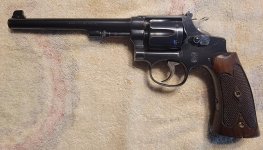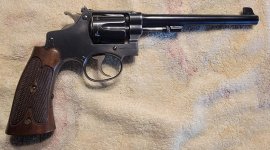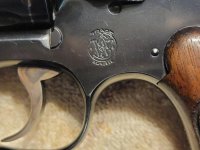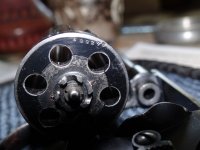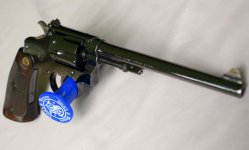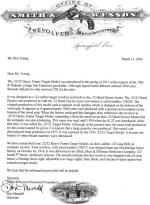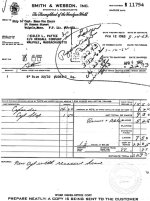I notice that serial numbers range from 1911 to the early 1940s. I would like to get an approximate date. I'm guessing the late 1920s -early 1930s, but it's just a guess. I'm attaching photos. Mine has an S# 408988 6' Barrel, 'Made in America (one line), a Small S&W logo on the right side, 5 screws plus tension a screw on the grips.Non recessed cylinder. Walnut checkered two screw target grips, no medallions, Small mushroom ejector head, pinned partridge front sight. I'm told it was a family gun, but the great-grandson didn't know about guns. He want $500 I said, okay.
As for as S&W .22s I have a 1960s M34 a 1980s M17, and a 1967 M41, but no early Smiths except for a 1917 .45 ACP Army issue. The remaining 12 are 1960+ S&W double action centerfires and a M52.
Any feedback on the .22-.32 would be appreciated
As for as S&W .22s I have a 1960s M34 a 1980s M17, and a 1967 M41, but no early Smiths except for a 1917 .45 ACP Army issue. The remaining 12 are 1960+ S&W double action centerfires and a M52.
Any feedback on the .22-.32 would be appreciated
Attachments
Last edited:

